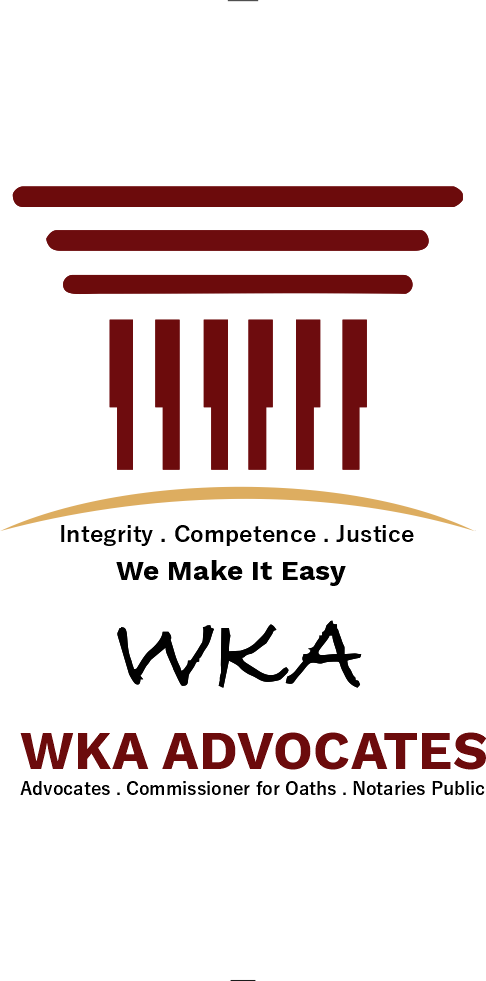We shape our buildings; thereafter they shape us. (Winston Churchill)
Introduction
Kenya has witnessed untold horror of collapsing and sinking buildings in the last decade. This has resulted in the loss of lives and economic investments. Moreover, more buildings continue to be condemned by the National Construction Authority (“NCA”) as unfit for habitation. Going by a final report of an audit which was ordered by President Uhuru Kenyatta on the state of buildings in Kenya, it was concluded that buildings collapse due to poor quality of concrete, lack of proper foundation and use of substandard building stones.
It is then imperative to analyze the different professionals, their roles and responsibilities in avoiding defects in construction.
- Owner/Employer/Client
An Employer can be an individual, partnership, corporate entity, commercial developer or the government and who eventually owns the project or sells it after completion.
In this regard, it is the Employer who generates an idea and arranges for the funding for a particular project. It is commonplace to see many prospective owners approaching financial institutions for construction mortgages and other related loan facilities.
Further to this, the Employer provides a scope definition of the work to be done.
- Project Manager
The project manager is usually a person who is well versed in the construction industry. Increasingly, project managers are expected to be holders of Bachelor of Science or Master’s degrees in construction related fields.
Employers, who normally have little or no experience, appoint project managers to oversee and manage the projects. Once the design phase is complete, the project managers are tasked with assignment of contractors to the project through a bidding process.
In this regard, project managers are required to; advise the owner on the cost estimates and organize for payments; negotiate contracts with architects, vendors, and contractors;determine the scheduling of different phases of a project based on established deadlines and finally supervise the completion of the projects.
- Geotechnical Engineer
All high rise buildings and structures such as bridges must have strong foundations. This is where Geotechnical engineering kicks into action.
It is a regulated profession under the discipline of Civil Engineering. As such, the engineer must be registered under the Engineers Registration Board of Kenya (ERB) that is a statutory body established under Section 3(1) of the Engineers Act 2011. The ERB website has a database of all registered engineers http://ebk.or.ke/registered-professional-engineers/.
The role of geotechnical engineers is to study soil and rock mechanics in order to determine the physical, mechanical and chemical properties that will influence the project under consideration. It also involves the assessment of risks such as earthquakes, soil erosion, landslides and sinkholes. Upon evaluation of the site, the engineer will then design the earthworks and advise on the type of foundation expedient for the proposed project. In addition, the engineer can propose ground improvement, which is a technique to improve the load bearing capacity of soils.
Geotechnical engineering includes the construction and design of slopes, retaining structures, embankments, roadways, tunnels, levees, wharves, landfills and other systems that are made of or are supported by soil or rock.
- Architect/Designer
An architect is a professional who performs a significant role in the construction project.
The architect must be registered with the Board of Registration of Architects and Quantity Surveyors that is a statutory body established pursuant to section 4 of the Architects and Quantity Surveyors Act.
Following recent developments in the Kenyan IT industry, it is now possible to look up online all registered architects on http://www.boraqs.or.ke/Members/Architects.
The Employer engages the architect, who conceptualizes the ideas of the Employer into a set of two dimensional drawings normally referred to as blue prints. Further to this, the architect draws up the plan for the proposed construction, specifies building materials and interior design finishes. As such, the architect may also make variations (change orders) in the plans as required by the Employer from time to time.
Based on the contractual arrangement, the architect may be an agent or representative of the Employer. This means that he carries out additional roles of ensuring the work is carried out as per the drawings and the specifications. In respect to this, the architect spearheads the project and coordinates with the contractor or project manager.
Architects also work hand in hand with structural engineers to design aesthetic structures which are safe and capable of withstanding the elements to which they will be exposed.
- General/Prime Contractor
All contractors must be registered under the National Construction Authority that is a statutory body established by Section 3 (1) of the National Construction Authority Act.
The traditional role of the contractor is to transform in to realization what the architect has designed. In a Design & Build contract, the general contractor has additional design responsibilities and provides select materials for the architect to choose from.
In summary, the major responsibilities of a contractor are to; obtain all the relevant permits and approvals; planning, developing and coordinating activities in the building of structures; hiring, payment and supervision of workers; obtain specified materials from suppliers; control the budgetary allocations with exceptions of variations; and completion of the project within the stipulated time frames and implementation of any changes.
The general contractor normally engages Subcontractors. These are professionals in specialized fields such as electric wiring, plumbing, carpentry, masonry, air condition supply, painting and steel fixing.
- Quantity Surveyor
This is a licensed professional who is registered with the Board of Registration of Architects and Quantity Surveyors.
As the name suggests, their primary role is to quantify the various resources such as labour, supervision, plant and materials required for a project. Following this, the quantity surveyor will then provide estimates for the project budget and analyzes the effect of design changes on the budget.
It is well recognized that the most important mandate of the quantity surveyor is the preparation of Bill of Quantities (B.Qs). The B.Qs is crucial in; producing the tender document; management of the tender process; variations control; negotiation and assessment of claims; valuing completed works and providing expert witness reports in case of a dispute.
- Lawyers/Advocates
Construction law is a relatively exciting field for legal practitioners.
Lawyers assist in tasks such as; drafting of complex agreements; drawing instruments for banking facilities; negotiating construction or other land related contracts, warranties and advising on compliance related issues. In the event of disputes, construction lawyers are fundamental in guiding the dispute resolution processes.
Conclusion
From the foregoing, it is clear that the construction sector is a diverse industry that encompasses a wide array of multidisciplinary professions. It is therefore in the best interests of the society at large for these professionals to work in harmony in order to construct safer, durable and environmental friendly structures.
Should you need any assistance in relation to any real estate and property development, contractual management, construction, infrastructure and projects, public private partnerships, conveyancing, real estate financing or any general advice, kindly contact as at info@wka.co.ke


